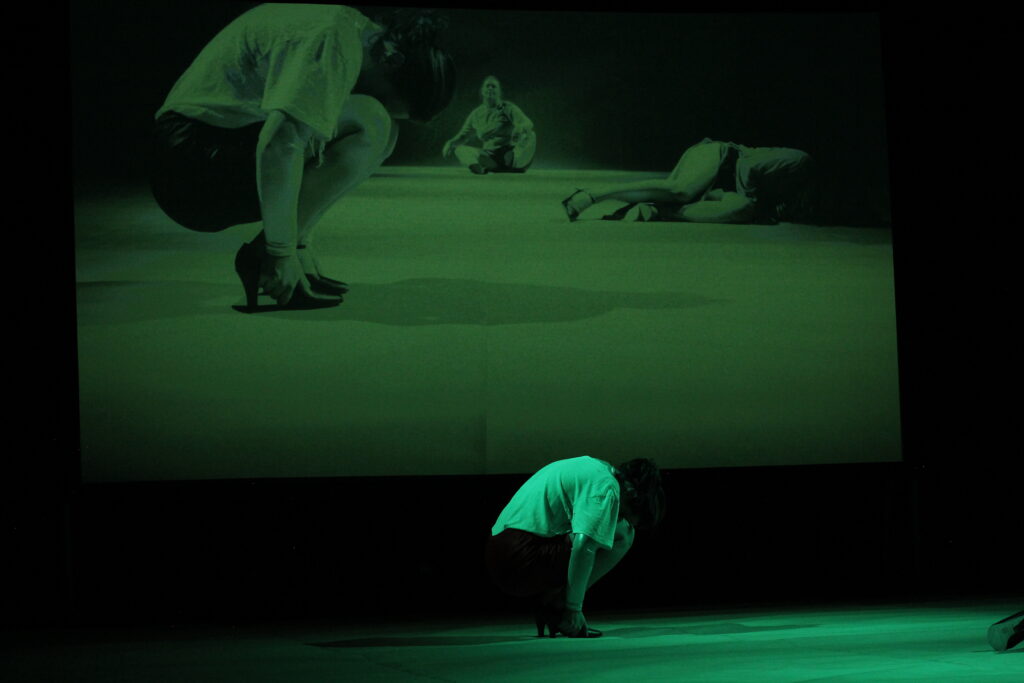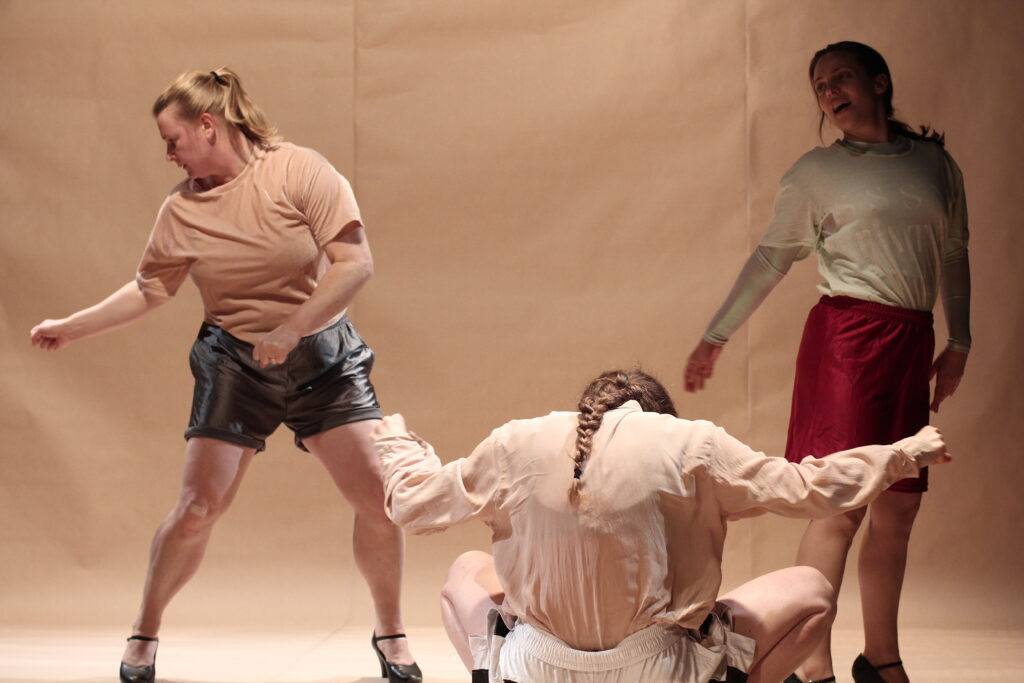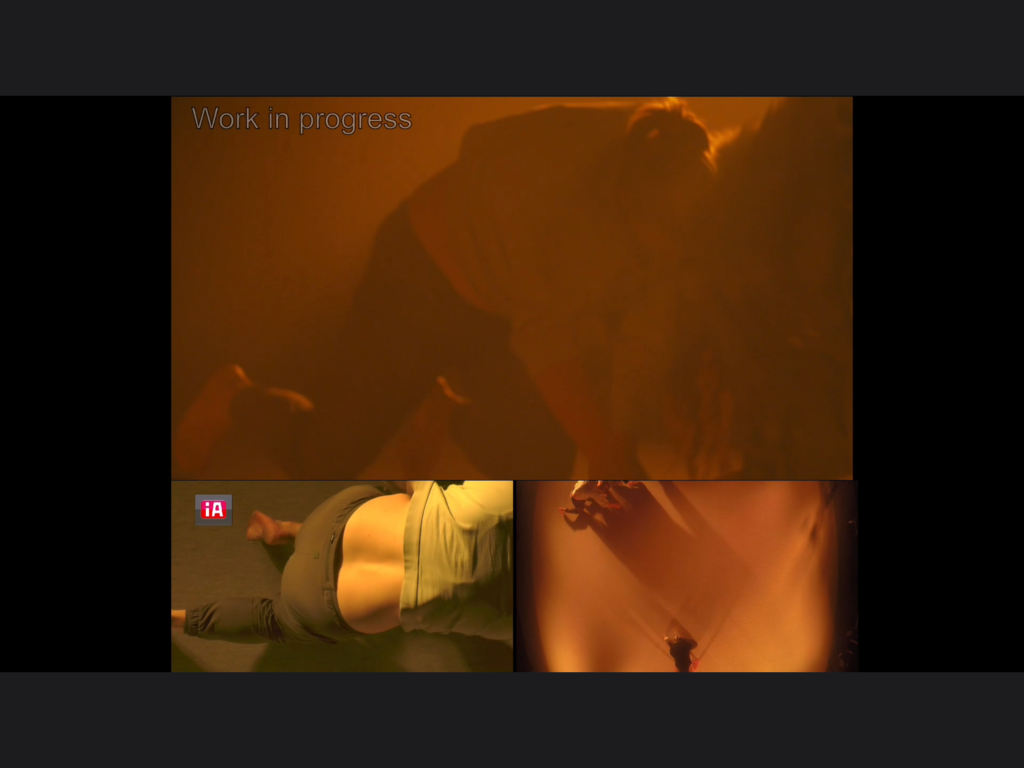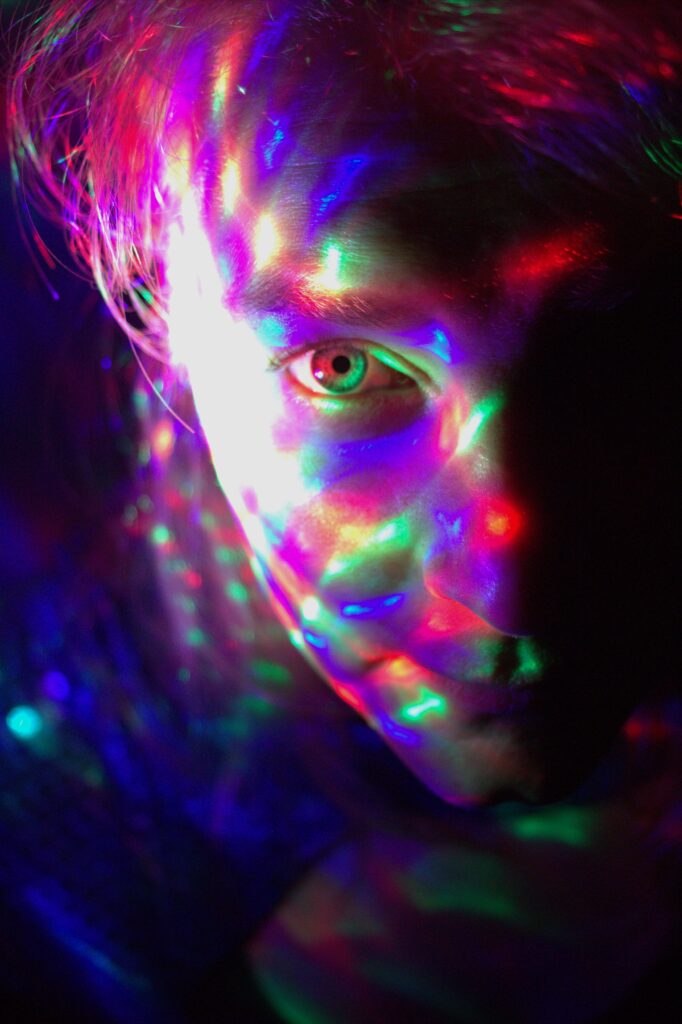Samtal med Animalarium

Animalarium is a dance- and performance collective consisting of Alexandra Wingate, Liv Schellander and Lena Kimming. Their most recent work, Constellation#1 –Dawn obliges us to dream will be presented at 3:e Våningen 12th–22nd of September. Their work enacts some of the burning issues of our time – Countdowns, Extinction, and Future Dreaming – and brings the collective unconscious onto the stage; engaging audiences through live art.
Animalarium’s larger project Constellations is part of Perform Europe and will be presented in Austria, Sweden and Norway during 2025.
Alexandra Wingate and Liv Schellander make up two thirds of the collective Animalarium.
The trio (the two of them plus Lena Kimming, who was unable to join this time) met in London when they were all students at Trinity Laban Conservatoire of Music and Dance in 2003. Since then, they have collaborated in different formations through different projects, culminating in the group Animalarium, which has been active since 2016.
Constellations being a part of Perform Europe makes it the densest and most extensive project the group has been working on so far.
Can you speak a bit about the background of the collective Animalarium?
– We’ve done different works and we also worked a lot with the screen and online realities, Liv says. Now we’re exploring a new practise that we call choreo-constellating, which we will present now, in September in Gothenburg.
Alexandra explains that Animalarium’s work originates in physical experimentation rather than coming from a purely intellectual framework. Together they have dedicated substantial time developing and embodying ideas together.
Alexandra:
– We created the first work, Animalarium, and after that we started discerning the concepts. We spoke about things while we were working, but it was a mode of doing and doing and doing and doing – and improvising.
Liv:
– Improvisation is a connector from our past, from the time of our time at Laban, where we met and played with each other a lot and danced. We developed a practice of improvisation.
Alexandra:
– And score-making… Being interested in developing a score and then seeing where that takes you, and being quite nerdy about it and at the same time being as crazy and free as you can be.
Alexandra explains that a key element has been their shared interest in a similar kind of making, meaning that even the sort of “conflicts” that happen are fruitful conflicts, and that sharing the same base of making means that it’s possible to get further.
– I think our work really is three people meeting, she says. – It’s an enriching process that becomes like a fertile ground for us. We’ve been working with certain themes and interests for a long time, and this new work is definitely a continuation of that, but it is also quite different, what we’re embarking on now.
Could you elaborate a bit on in what way Constellations connects to the work you have done previously as well as its specificity?
Alexandra:
– In the first work [Animalarium], we were concerned about being horses and doing dressage, but doing it very earnestly. We were interested in human nature, and using animals [as a way] to say something about humans.

Liv:
– There was also an aspect of gender, especially in that beginning work, without us deciding it first, but by bringing things together, being horses, working for the screen and adding quite bombastic music.
Alexandra:
– We had a setup with the screen that filmed parts of what we were doing in a very particular, low angle. It became two shows within one, a doubleness of how these horses -that were actually women- were being portrayed. These were concepts which emerged, and then we got more and more interested in certain aspects, and started describing it. We were always interested in creating multiple perspectives on one event.
Liv:
– Sometimes I feel that what we’re trying to do is rather more complex than simple. So far, all of us are always doing everything; making, choreographing, embodying… Not to mention producing and organising. We have so far not had a producer or a company. We are applying for funding, reflecting, trying to write good concepts… so we do everything by ourselves since 2016. If we get more money for next year, that might slowly change. But I think it does something to you. And I think the reason why we had a basic trust always was because we met [already] when we were in our late teenage, early adult years.
Alexandra:
– It’s hard to survive unless you’re actually also friends, and have a long-term trust, because creative processes are always part pain, you know. But then there’s that additional strife of doing it while always having too little resources.
Liv:
– It’s a tender tipping point. And I’ve seen this with many colleagues or groups, if nothing happens for too long, you just have to let go.
Animalarium has gotten more economic support lately, but there are still challenges, since they live in different countries; Sweden, Austria and the UK, and family needs to be considered. But they tell me that they are trying to incorporate all elements of this reality into their work so they can continue.
Liv:
– It’s a part of the journey. It’s the life stories of people. And friendship matters as well. In the performance world, I feel like we are neoliberally influenced in the sense that we hop from one project to the next and should be as adaptable as possible, both to survive but also to provide what the market needs.
But I feel personally I really, really value long-term sustainability on different levels, personally, relationship-wise. I think this is also something we practice and [which we] have. And that’s very, very valuable.

Do you think that being forced to do everything, or being a kind of “octopus” producing while performing, while choreographing, while figuring out concepts, while writing, also gives something to the work?
Alexandra:
– Yeah. First we made things and then we had a process of writing. We worked a lot on all the long applications. It almost required its own process to really go into an academic describing of what we do. This collective work has a certain kind of tightness and pinpointing, but not the same thing as when it’s one mind that does it. It’s like a loss of control, also because we use visualisation. We set up a structure and an idea, we are in agreement, and we’re constantly understanding it more and more.
You describe that the work emerges from the doing, that it comes from something physical to start with. How do you incorporate the score?
Liv:
– I want to throw in the word “embodiment” here.
Liv describes how the group values communication throughout the process; taking time to share their subjective experience with the others..
– Now we have years of experience, and I think it’s almost like you start building a garden…. – We’ve built a foundation where we know what we talk about from the inside. We use embodiment in the sense that we don’t just do something, we reflect on it and see what happens to us in it. And those experiences are very rich and complex.
Alexandra:
– I think every performer works with embodiment, but [in Animalariums’ previous works] we stretched it to the point of “I’m interested in having a collaboration with myself on camera together with other ones. So I’m embodying it in my own body, but I’m almost like stretching my sort of embodiment to myself in the camera.”
It’s a very odd relationship with something that should be very superficial, but we sort of made it very delicate and interested in storytelling; removed from ourselves, but still very embodied.


Does it become a kind of dissociation? Or how do you experience that work with the video and seeing yourself?
Liv:
– I think it can happen. That would be my answer. And I think it did happen. I think the dissociation happens with everything. It can happen with any process or encounter.
Alexandra:
– It was almost like the “choreographer” [in me] could be very present, even if I was incredibly in it. So it was like the “rider” was very much there, but the “horse” was the one performing.
We were reading about [the horse], looking at the skeleton, looking at video [materiel] and then trying it out and then deciding the frame. Is it dressage, or are they in the zoo? Are they in the circus? What does that do to the score building? And then playing with it, adding costume to recreate different kinds of bodies. But that was the past work [Animalarium]. Now [in Constellations] we have something completely different.
Liv:
– In 2021, we had a residency at Riksteatern, which also still was in the middle of the pandemic. And a notion of darkness came in, but also a notion of calmness. And I think earthiness in terms of which animals and which states we explored. There was also a notion of going from confined spaces and domestication as a complicated process towards suddenly the notion of extinction creeping in to the process.
Alexandra:
– Like a looming…
Liv:
– Like a looming, yes. So I think we invited that, but I think it also found us. And again, I think it came through playing and the practice. We didn’t decide on the topic. It was the other way around.
Alexandra:
– And I think the other addition was that we stopped [working with] concrete animals, almost abstracted. And we started calling them, and this is maybe a loaded term, “spirit animals.”
Do you think that makes it go more or less towards the human?
Alexandra:
– I’d say both. We’re more human, but also less. It’s more about fully transforming. It’s also [about] catastrophe and extinction, as the extinction of the ego, or the ego death. As a concept, what we’re doing is formless, and it doesn’t have to be human or animal. Here, [in this work, we’re] telling a story about a cluster of molecules becoming a body, like every other body. We are interested in a non-human-centric perspective.
Liv:
– Now that we turn more towards transformation and becoming other energies or materials, I have introduced the research-tool “choreo-constellating” in a very simple sense, looking at transforming from human to animal as a process, describing the process in your own body as a sensory experience, rather than going into a specific idea of a body or an animal.
Can you explain a bit more about choreo-constellation?
– Choreo-constellating is based on systemic constellation work, which usually works with a group or large group of people. It is a therapeutic approach which works with- and looks at- systems.
For example, you can work with symptoms and the system of your own body. What we are doing is translating it to a collective topic of climate change. Extinction and all the fears and terrors that might have to do with it came from us and it happened to us (as a human collective). For me this is interesting because it relates to the fact that there are always symptoms in the world. We got curious about catastrophes and urgency that many of us experience.
Constellating means that you are never on your own, we are all interdependent. And so as a physicalised form in space, we are practising at the same time, “what is happening to me?” but also “how do I relate to the other elements present in an environment?”
This time we [not only use movement but] language; speaking out sensations, imagery, associations, maybe fantasy that comes from our own perception. It’s not pre-prepared or decided. So it’s a very emergent process. We’re creating an ecosystem of topics, deciding to use these hugely important and frightening global topics [of climate change] but then we relate it to the local.
In the Perform Europe-project, Animalarium will go to three very different places and work with the distinct place and its people, its culture, its history, its approach, its practises, its experience of climate change.
Alexandra:
– We will go to Kautokeino in the north of Norway, in Sápmi, and work there, with Elle Sofe Company to work with Sámi artists. Then we’re going to Ställberg in Bergslagen, Sweden and then we’re going to Vienna, Austria.
I wanted to ask, when you’re doing this work in 3:e Våningen now, in what way are you involving the audience?
Liv and Alexandra say that they don’t know exactly how the audience relationship will manifest itself at 3:e Våningen, but that each night will be a different journey with different topics, different storytelling, different systems. One thing is clear though: They wish to be able to create an experience and a sense of togetherness with the audience.
In the performances at 3:e Våningen, Animalarium will collaborate with Gothenburg-based dance artist Ina Dokmo.